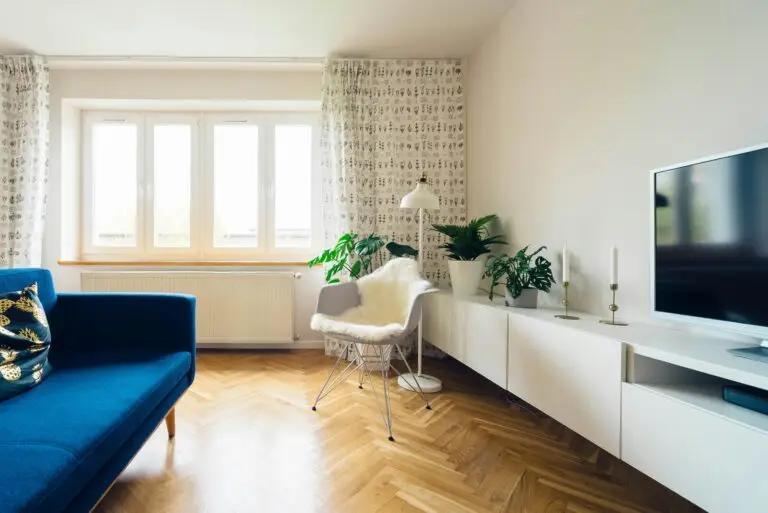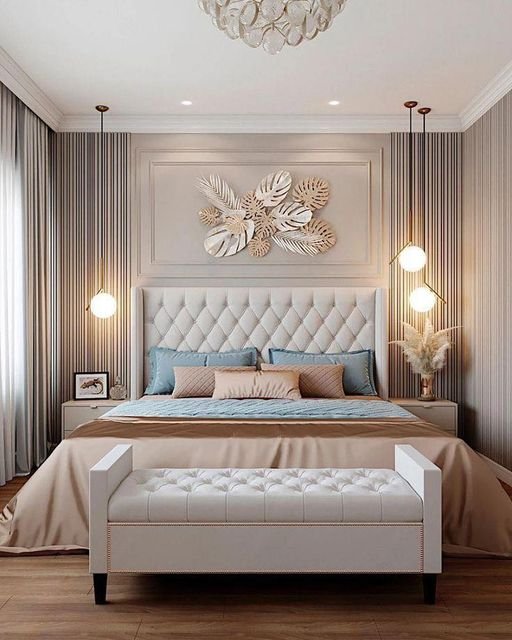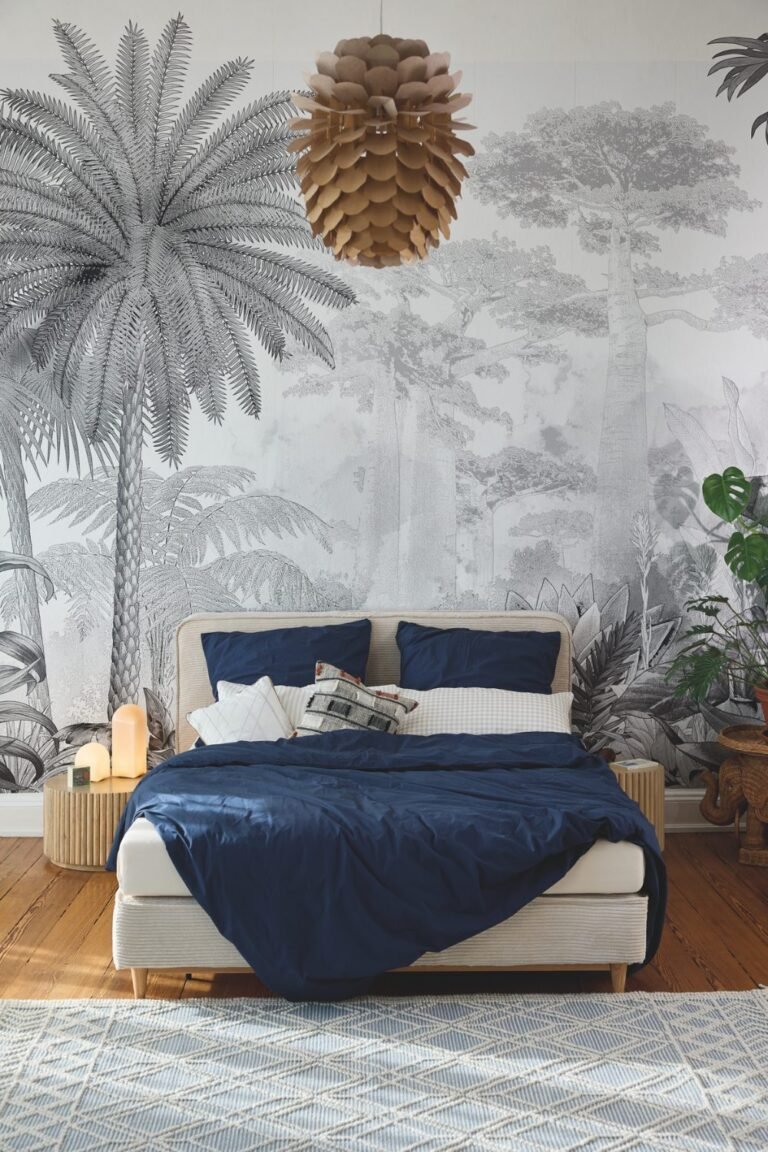4 Rules Designers Reveal: Mix Metals in Decor with Confidence!
To successfully mix metals in a room, consider balance and placement, and choose a dominant metal hue. Avoid mixing too many metal types to maintain cohesion.
Mixing metal with interior design can add depth and interest to any room, creating a beautiful and sophisticated space. This layout style has evolved past conventional codes, taking into account extra creativity and private expression in home decor. By following a few primary suggestions, you can master the artwork of steel blending, making sure a harmonious blend that enhances the overall look of your space.
It’s vital to strike a balance among warm and funky tones and take note of how the different steel finishes interact with the colours and lights of the room. Typically, designers suggest having key metals for the space, while others are used as accents to provide contrast and volume. Remember the goal is to have a curated look that feels intentional, not cluttered.
The Art of Mixing Metals
Mixing metals adds depth and interest to a room. It’s a bold design choice. Many designers recommend it to bring variety and texture into spaces. Think gold, silver, bronze, and more living together. This mix can make any room shine with personality.
Understanding the basic principles of metal mixing is key. Start with a dominant metal as your room’s main color. Then, choose a secondary metal to support it. These metals should complement, not clash. Balance is important. Too much metal may overwhelm. A little can add just the right sparkle. Remember, contrast is your friend. It makes the room pop.
Choosing Your Dominant Metal
The dominant metal in a room sets the tone. Think of it as the anchor metal. It’s the one you see the most. It’s like the room’s big boss. To pick it, look at your room’s style and color. Gold and brass shine in warm spaces. Silver and chrome fit cool-hued rooms better. Use more of your main metal than others. It makes the room feel put together. You can mix other metals, but keep them less. This balance is key. Your main metal is the star, and others are the supporting cast.
Complementary Metal Accents
Mixing metals adds depth and texture to room design. To create harmony, pair metals that complement each other. For example, gold pairs well with bronze for a warm feel. On the other hand, chrome works with nickel for cooler tones. Use one metal as the dominant shade and others as accent pieces.
Consider the room’s color scheme and lighting. Rooms with plenty of natural light can handle a mix of warm and cool metals. For rooms with less light, stick to metals that reflect more light. Remember, the goal is to enhance visual interest, not to overwhelm.
Textures And Finishes Matter
Mixing metal textures in a room can create visual interest. Matte surfaces absorb light, offering a subtle elegance. Polished metals reflect light, adding sparkle and shine. Brushed metals have a tender glow and can hide fingerprints and smudges. Pairing exclusive textures can balance a room’s sense. For example, combine a matte black faucet with a polished chrome sink. Or, use brushed nickel cabinet handles against a shiny stainless-steel backsplash. These mixes help avoid a monotonous look and add character to your space.
Color Palettes And Metal Tones
Selecting a coloration scheme that enhances metal tones is vital. Warm metals, like gold and copper, pair properly with warm hues. Think of colours like red, orange, and yellow. Cool metals, such as silver and chrome, harmonize with cool colorations. Look for blues, vegetables, and purples.
Mixing metallic shades can upload intensity to a room. Yet, the room’s theme should guide your choices. A modern theme might feature stainless steel with crisp white walls. A rustic theme could blend copper accents with earthy tones. Think about the mood you want to create. Then pick metals and colors that work together.
| Metal Type | Color Palette | Room Theme |
|---|---|---|
| Warm Metals (Gold, Copper) | Reds, Oranges, Yellows | Rustic, Traditional |
| Cool Metals (Silver, Chrome) | Blues, Greens, Purples | Modern, Industrial |

Spatial Distribution Of Metals
Even metal distribution is key in room design. Balance is your friend. Think about spreading different metals across the room. It’s like sharing candy evenly at a party. Everyone gets some, so the room feels happy and balanced.
Creating focal points with metal accents brings magic to a room. Choose a spot. Make it shine with a special metal piece. Like a treasure chest in a sea of treasures. It draws eyes and tells a story. This spot is the star of your room.
Common Mistakes to Avoid
Overcrowding areas with too many metals can make a room feel cluttered. It’s like when your toy field is simply too full, and you can’t find your favorite toy. Keep it simple. Choose a few metals that look good together and stick with them.
Ignoring the role of lighting in metal decor is another mistake. Think of metals as shiny stickers. Some stickers sparkle more in the sunlight, right? The same goes for metals. In different lights, they look different. So, before you pick your metals, see how they look in the room’s light during the day and at night.
Real-life Examples Of Metal Mixing
Mixing metals needs a keen eye for balance and harmony. One popular combination is brushed nickel with polished chrome. These two create a subtle contrast that’s both modern and timeless. Think stainless steel appliances with chrome fixtures in a kitchen. Another successful pairing is copper accents with iron finishes. This blend offers a warm, rustic feel, suitable for living rooms or dining areas.
Designers often mix gold and silver tones for a touch of luxury. In bedrooms, a gold-framed mirror might hang above a dresser with silver drawer pulls. The key lies in repetition and balance. By repeating each metal a few times, the design feels intentional.
| Space | Metal 1 | Metal 2 |
| Kitchen | Brushed Nickel | Polished Chrome |
| Living Room | Copper Accents | Iron Finishes |
| Bedroom | Gold Frame | Silver Pulls |
Maintaining Your Metal Decor
Cleaning and being concerned for combined metal portions are crucial for their splendor and lifespan. Use mild cleaners and tender cloths to prevent scratches. Regular dusting continues the luster of the metals. Longevity and patina evolution range amongst one-of-a-kind metals. Brass and copper expand a rich patina over the years. This adds character and intensity to the room’s aesthetic. Embrace the herbal growing older manner of metals, as it may decorate the mixed-steel design subject matter.
Frequently Asked Questions(FAQ)
Is it okay to mix Metals in A Room?
Yes, blending metals in a room is acceptable. Aim for a balanced, intentional look by way of deciding on two or 3 metal finishes that supplement each different. Distribute them flippantly throughout the space to create visible concord and avoid a cluttered sense.
What Is the Rule of Thumb for Mixing Metals in the Kitchen?
The rule of thumb for mixing metals inside the kitchen is to choose one dominant metal for consistency and complement it with one or accessory metals for depth and assessment. Stick to a most of 3 distinctive metals to preserve a cohesive appearance.
Can You Mix Gold and Silver Accents in a Room?
Yes, you can mix gold and silver accents in a room. For a cohesive look, balance their distribution and combine with neutral tones. This approach adds visual interest and depth to your decor.
Should You Mix Metals in the Bathroom?
Yes, mixing metals in the bathroom can add depth and interest. Stick to a cohesive color palette, balance warm and cool tones, and limit the variety of metals to create a harmonious look.
Conclusion
Navigating the art of mixing metals adds depth and character to any space. Remember, your design choices reflect your unique style. Embrace these guidelines to harmoniously blend different metals, but don’t shy away from trusting your instincts. Your room’s metal mix is a personal touch that showcases your creativity.
Happy decorating!








this article is very informative . this very helpful for me